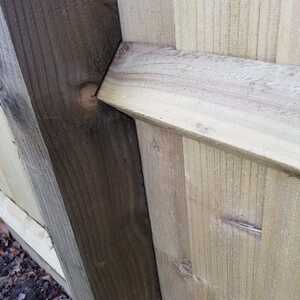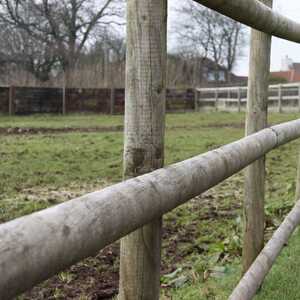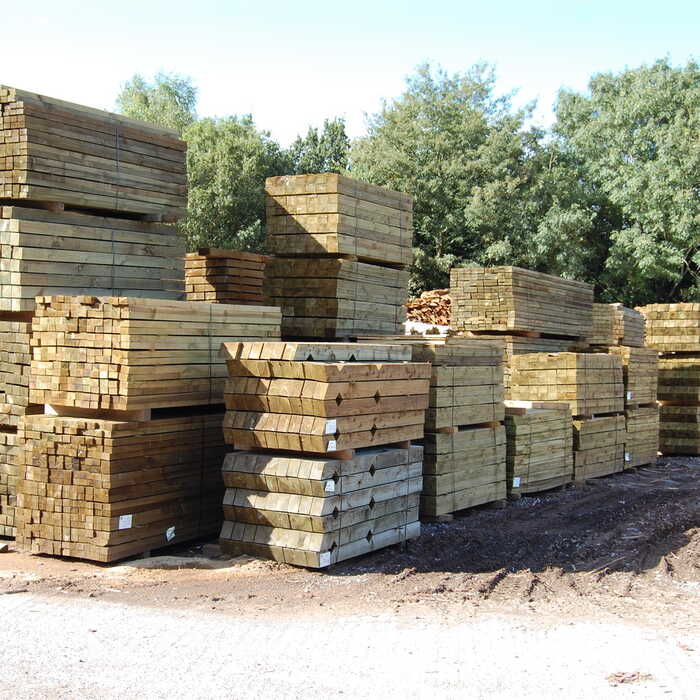Why timber needs protection
Wood is a natural material and, over time, it will degrade when exposed to wet conditions. The risk of decay increases sharply once the moisture content rises above 20% – a level often reached outdoors or in poorly ventilated areas.
Heartwood from some species offers natural durability, but modern timber often contains large amounts of sapwood, which is far more vulnerable. Preservative treatment is essential for giving timber a longer service life, particularly in applications involving wet weather or ground contact.
Understanding Use Classes for timber
Guidance for selecting the right treatment level
The durability required from preservative-treated timber depends on how and where the timber will be used. British Standard BS 8417 groups these into Use Classes (UC), which indicate the level of exposure the timber must withstand.
|
Use Class |
Application area |
Typical uses |
|
UC1 |
Internal, dry conditions |
Floor joists, furniture frames |
|
UC2 |
Internal, occasional moisture |
Roofing battens, frame timbers |
|
UC3 |
External above ground, exposed to weather |
Decking boards, fencing, cladding |
|
UC4 |
Ground contact or frequent wetting |
Fence posts, decking joists, sleepers |
|
UC5 |
Marine environments |
Sea defences, piers, marine piling |

Timber in permanent ground contact (such as posts or subframe timbers) must meet Use Class 4 treatment standards to perform as intended. Anything less will result in shortened lifespan and increased risk of structural failure.
Timber species and treatment types
Not all timber takes treatment the same way
The effectiveness of preservative treatment depends on both the type of preservative used and the species of timber being treated. Softwood species such as pine, spruce and larch are commonly used for treated timber. However, each absorbs treatment at different rates, which can affect penetration depth and overall durability.
Treated timber is usually processed in one of the following ways:
High-pressure treatment
Where preservatives are forced deep into the timber using a vacuum-pressure cycle
Low-pressure treatment
Used mainly for internal or decorative applications
Dip or brush treatment
Providing surface-level protection (not suitable for high-exposure areas)
Only high-pressure treated timber should be used for outdoor applications where long-term exposure to moisture is expected.
Buying treated timber from trusted suppliers
How to make sure your timber is fit for purpose
At Fountain Timber, we stock a wide range of pre-treated timber suitable for a variety of outdoor uses – including UC4 decking joists, UC4-rated sleepers, gate posts, and Redwood Glulam posts.
We work closely with trusted UK treatment partners to ensure the timber we supply has been pressure-treated to the correct standard for its intended use. All UC4-rated products we sell are pressure treated to achieve deep preservative penetration suitable for long-term ground contact.
To get the best from your treated timber:
Avoid cutting or notching UC4-rated components. If cutting is necessary, always apply a high-quality end grain preservative to all exposed areas.
Allow for proper drainage around posts set in concrete to prevent water pooling.
Ensure timber is not exposed to conditions beyond its rated class – e.g. do not use UC3 timber for applications that involve direct ground contact.



Installation affects performance
Design and maintenance are just as important
Preservative treatment alone does not guarantee performance. Timber must be used correctly and installed with care. Good design, appropriate ventilation, and ongoing maintenance all play a role in ensuring the timber reaches its expected service life.
Poor detailing – such as water traps, ground contact with non-UC4 material, or failing to treat cuts – can lead to premature failure, even if the timber was correctly specified at purchase.

Free 10 Year Replacement Undertaking
Any UC4 product supplied by Fountain Timber Products Ltd which fails during this 10 year period will be replaced free of charge subject to the following conditions:
- The timber must be used for the supplied purpose and not placed in any abnormal conditions not highlighted to Fountain Timber Products Ltd at the time of purchase or alternatively removed from their original position and re-used in differing conditions.
- If the product is cut, notched or drilled it is essential the cut ends are liberally treated with at least two coats of quality wood end grain preservative.
- Fence post must not be pointed after treatment.
- The shortening of ground contact products i.e. posts, gravel boards, bollards, sleepers etc should be avoided wherever possible. Under no circumstances should a cut end be placed in the ground without return for pressure treatment.
- If setting posts in concrete, suitable drainage/runoff must be applied, allowing water to flow freely away from the post
- We will require the return of samples (i.e. whole post, bollard, sleeper etc.) for any failed product to identify the cause of failure and to test the quality and penetration of the treatment
- Proof of purchase must be supplied with any claim – this can be by way of receipt, invoice number or delivery note number for the products in question.
How can we help?
If you’re unsure what level of treatment your project requires, our team is here to help. We’ll guide you to the right product – whether it’s for decking, fencing, landscaping or structural outdoor use – and ensure you understand how to install and maintain it properly.

